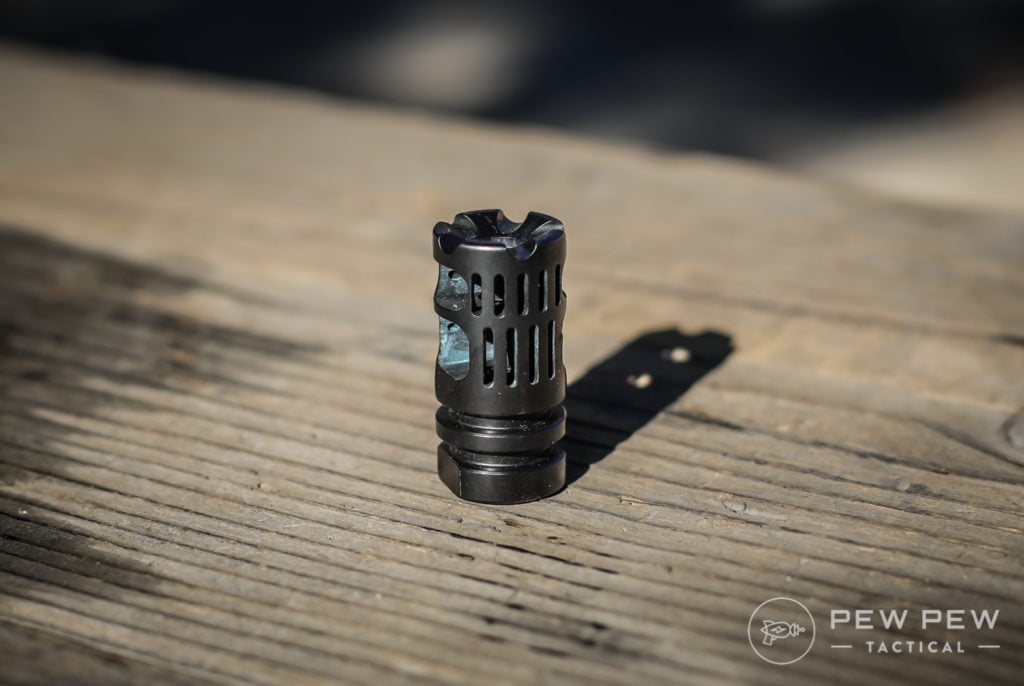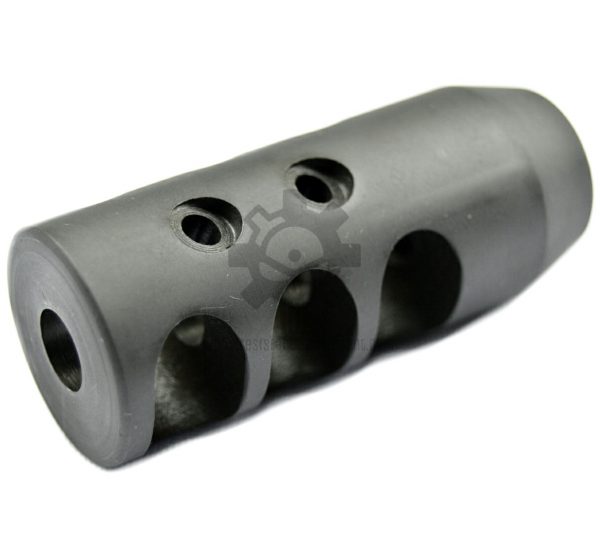

In and of themselves, muzzle brakes offer no real accuracy changing performance. Whether we’re talking ports cut into the muzzle of your rifle or a special brake screwed onto the end of your rifle, a muzzle brake will improve your accuracy and make it easier to shoot. In fact, a good muzzle brake can improve your accuracy.īy reducing felt recoil, muzzle brakes prevent the shooter from getting tired over multiple shots and can help reduce flinching or tensing up before the shot too, both of which negatively affect accuracy. Do Muzzle Brakes Affect Accuracy?ĭo muzzle brakes affect accuracy? Perhaps a better question is do they negatively affect accuracy, and the answer to that is no. Now obviously you can build a flash hider around a muzzle brake and vice versa, which is why many do both, but for legal and practical reasons, there are plenty of standalone muzzle brakes. But instead of shaping and concealing the gas to reduce visible muzzle flash to the shooter, muzzle brakes work to redirect and use that gas to reduce the climb and recoil of a firearm after shooting it. Muzzle brakes, aka compensators, work somewhat like flash hiders in that they redirect muzzle gas. States that violate your Second Amendment rights like California and New Jersey strictly regulate or ban flash hiders, even though such infringements do nothing to prevent crime or violence. Sadly, this means the perfectly useful and innocent flash hider is seen as a tool of evil, used to conceal a gun in operation (hint, it doesn’t work that way – they only reduce the flash the user of the gun sees). Of course, this thought process is never properly explained, but facts never get in the way of a good old-fashioned moral panic guided by social control freaks. One common trope from anti-gun politicians and activists is that a flash hider is some sort of scary “military-grade” accessory that, through some sort of ill-defined mechanism, makes a firearm more dangerous. Get a BANISH 30-GOLD Are Flash Hiders Legal?

Obviously, this is very important to hunters and in-home defense or law enforcement situations. Many flash hiders these days also double as muzzle brakes since there can be considerable overlap in design features, but we’ll get into that in a moment.īasically, a flash hider exists to reduce the visible muzzle flash from the shooter’s point of view, protecting their night vision and aiding in faster follow-up shots in low light conditions. The days of simple clamp-on cones are long past, but the idea lives on with some can-shaped flash hiders that both conceal the muzzle flash and help cool the gas a bit to aid in reducing the visual signature of the fired round. This has all sorts of practical utility, ranging from self-defense to low light hunting, and of course military application. Either way, the end goal is the same – to minimize the amount of flash seen by the shooter when using the gun. The shorter barrel necessitated some sort of device to reduce the visual flash of a fired round in low light conditions, and the obvious solution was to simply shroud it with a metal cone.įlash hiders work by either concealing the muzzle flash (burning gases at the muzzle of the gun) or redirecting it through slots or holes in a muzzle device. These can be most famously seen on the British Enfield “ Jungle Carbine” of WWII. Some of the earliest flash hiders were little more than metal cones that clamped over the muzzle of a rifle. And if you don’t, follow along as we break it down.

Now we’ll go in-depth into the function of muzzle brakes and flash hiders.Īgain, if you already know this, great! Please share this article with people who might not. We already went over the difference between a sound suppressor vs a flash suppressor, with a brief look at muzzle brakes and flash hiders and how they work.

Sometimes the terminology can be confusing, and it is often made more confusing by anti-gun propaganda. There are three common devices that are often found on the muzzles of firearms – sound suppressors (or silencers), flash hiders (or flash suppressors) and muzzle brakes.


 0 kommentar(er)
0 kommentar(er)
